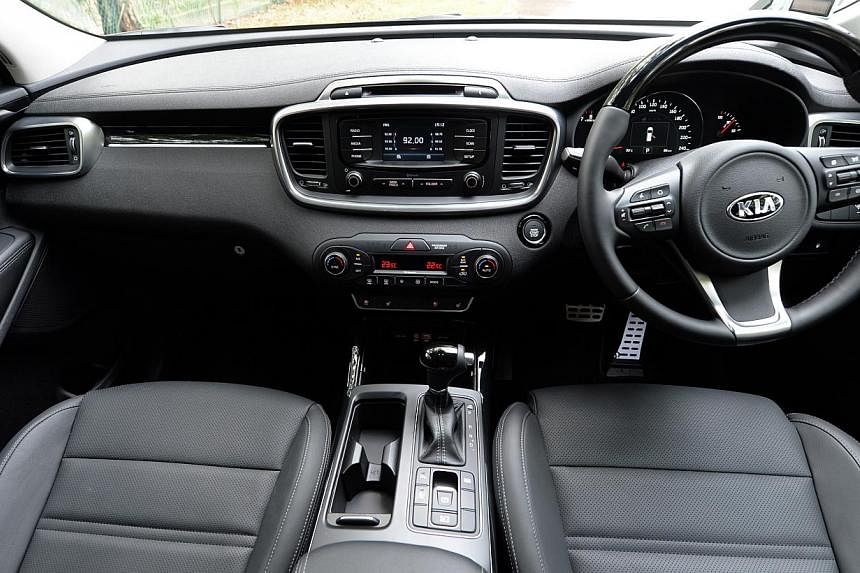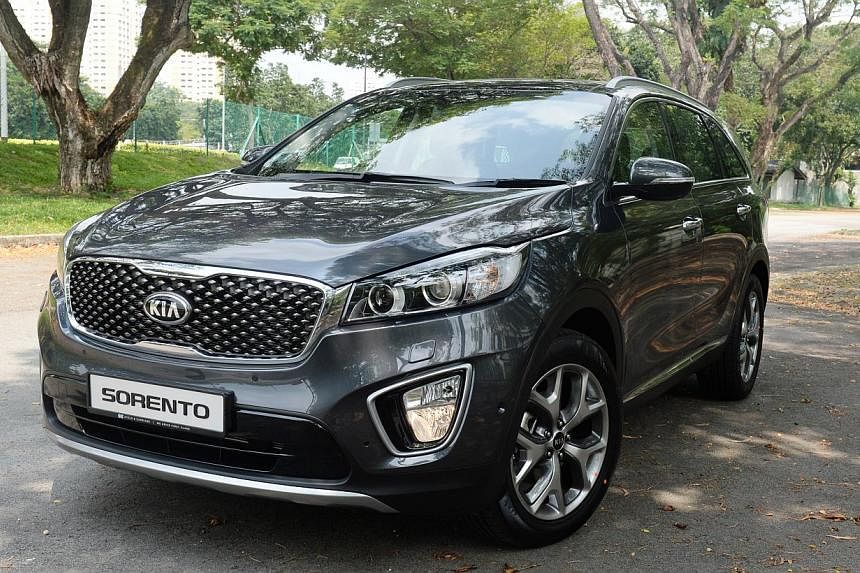I never look at the specs of a car before a test-drive. Sometimes, I do not even know the engine size at the start.
This gives me an uncoloured perspective and allows me to gauge a particular model with no more bias than past experience.
It also allows me to be surprised (or shocked) when I eventually go through the specifications after a drive.
In the case of the new Kia Sorento, I was very pleasantly surprised. But first, some preamble.
The car is the third iteration of Kia's full-size SUV that first appeared 13 years ago - around the time that the first Volvo XC90 made its debut.
From a dorky, clunky five-seater powered by an underwhelming 3.5-litre V6, it became a Cinderella of a seven- seater in just one generation, powered by a 2.4-litre four-cylinder.
On the surface, the latest Sorento appears to be an encore of the second- generation model. But it is something else and you feel it the moment you drive the SUV.
It is extremely car-like, with minimal body roll and bounce. It handles corners with equanimity, even when carrying a full load and driven fast.
When the tarmac is less than perfect, occupants have less chance of feeling seasick than in a few other large SUVs.
Yet it retains some of the traits of an SUV, such as a commanding driving position.
This is quite a feat. And checking the specs, it becomes clear how Kia did it.
First of all, the new car is 95mm longer than its predecessor at 4,780mm and 5mm wider at 1,890mm. Most of its increased length has gone to the wheelbase, which is extended by 80mm to 2,780mm.
At the same time, the Sorento is 15mm lower at 1,685mm, making it nearly 80mm lower than a BMW X5.
The longer wheelbase gives the Kia SUV more interior space - more legroom for third-row passengers and more stowage. With the last row of seats folded flat, the car has 605 litres of cargo space, 17.5 per cent more than before.
The longer wheelbase has also improved the Kia's ride comfort, giving it a certain calmness that eludes most, if not all, SUVs.
According to its specs, the new Sorento is made of sterner stuff. For instance, 52.7 per cent of its body frame is made of ultra high-tensile steel, up from 24.4 per cent previously. This helps improve its torsion rigidity by 14 per cent, which gives the car a safer passenger cell and, at the same time, makes it feel substantially more cohesive on a winding road.
That is not all. The car's rear suspension boasts bigger bushings and larger shock absorbers to better mitigate body movements.
At the helm, a new electric steering motor mounted on a steering rack instead of the steering column makes for better response and feel.
Indeed, the new Sorento drives better than many full-size SUVs here. You may say it is also the least rugged SUV because of its physical orientation, but I say so be it. Very few SUV owners go offroad anyway, so it is quite pointless to have high ground clearance and all-wheel-drive. Only the turbodiesel Sorento variant has 4x4.
SUV or not, the Sorento impresses with a host of other qualities. Insulation, for instance, rivals what you experience in a premium German SUV.
And not just against noise. Put your hand on the bonnet after a long hard drive and you feel... nothing. No heat. Pop open the hood and you discover why. Not only is the heat-insulating layer expansive and thick, the engine is actually mounted quite low.
This probably aids in the car's road dynamics, but I imagine pedestrians are less likely to be injured in a collision.
The Sorento is equipped with amenities you would not associate with Kia. It has a completely hands-free tailgate, which flips open when it senses its remote key. There is automated parking (parallel and perpendicular), ventilated front seats with memory function for the driver side, a panoramic sunroof with a roller blind, roller blinds for rear windows and self-levelling suspension.
Its electric parking brake system has a novel Auto Hold function - it activates only when you step on the brake pedal with some force, allowing you to execute parking manoeuvres without having to turn it off.
Responding to earlier criticism that its instrument panel was too bright at night, the car has a Night mode that turns off non-essential information.
There are also three drive modes - useful for times when you feel you need more oomph, or times when you want to be frugal. (The test-car averaged 13 litres/100km, which is somewhat higher than the 8.8 litres declared.)
Lastly, the car is a bit more elegant (for an SUV) than its slab-sided predecessor. While it still will not win any beauty pageant, it will win hearts with its impressive driveability and premium features.


